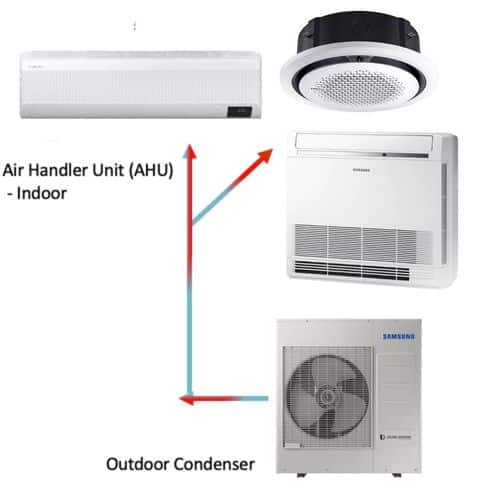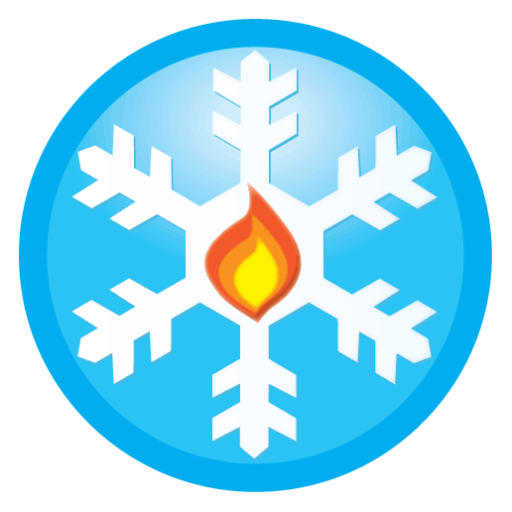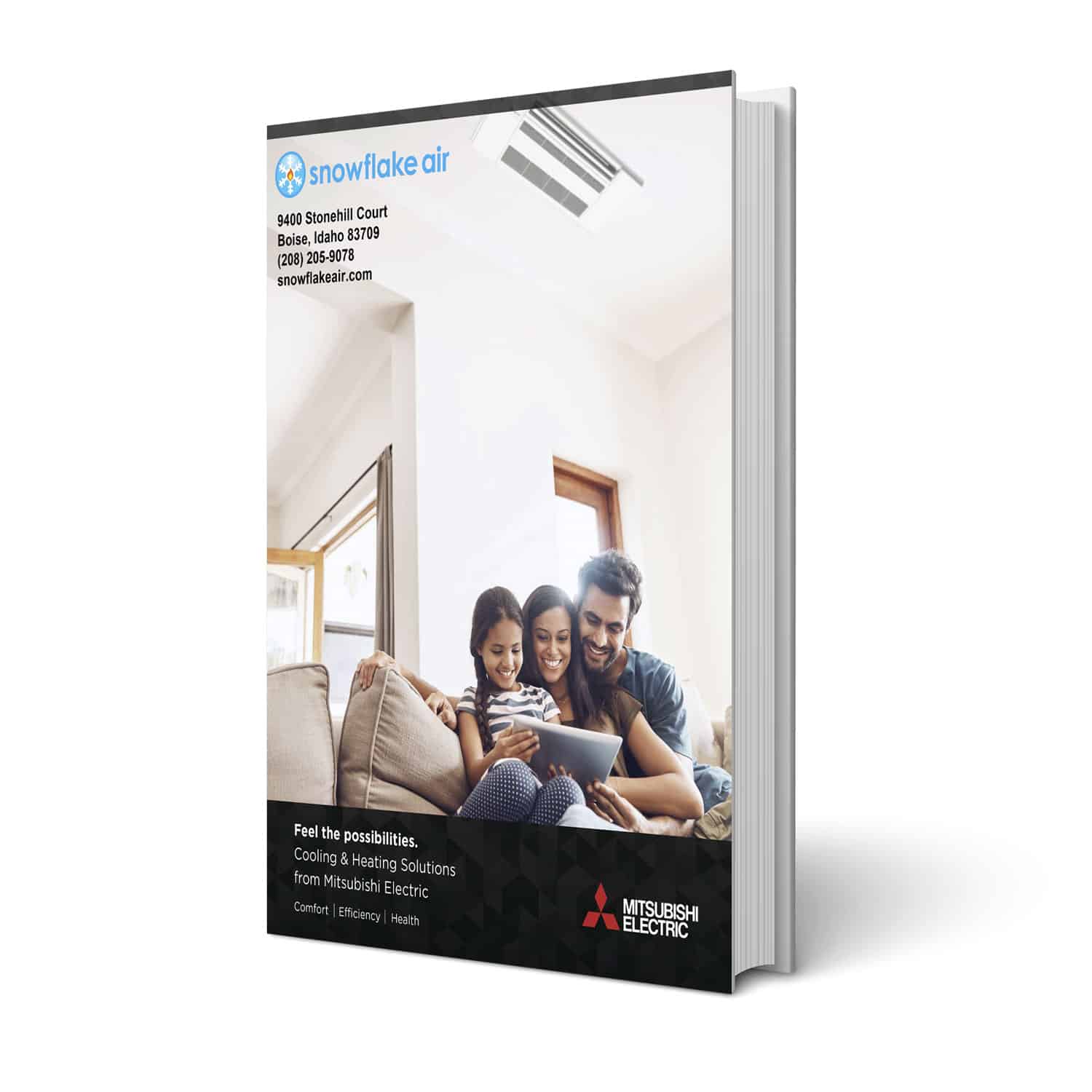
What Is A Heat Pump And How Does It Work?
Heat pumps are becoming more popular as an alternative to traditional HVAC options like furnaces and central air, baseboard heaters, and portable ACs. The pump systems use less energy, which saves you money on utility bills, and often provide better heating and cooling than the other options.
They also work in ductless systems, which is great for the many older homes in Boise Metro that don’t have ductwork. And, thanks to the 2022 Inflation Reduction Act, they’re more affordable than ever.
Read more about rebates, incentives, and financing for high-efficiency HVAC installations
In this article, I’ll walk you through the basics: What a heat pump is, how it works, and how it’s different from other HVAC appliances.
I’ve worked in the HVAC industry for more than 20 years, and today Snowflake Air specializes in high-efficiency heating and cooling systems like these.
We’re certified to service and install all major brands, including Carrier, Bryan, Mitsubishi, and Trane. And, we’ve installed hundreds of heat pump systems throughout Boise Metro and as far as Valley County.
If you have more questions or are ready to replace your existing HVAC, please call us for a free consultation.
What is a heat pump?
A heat pump system is an energy-efficient appliance that provides heating and cooling to a building by moving heat from one place to another. That’s instead of generating heat directly like a traditional heating system. They often last 15 years or more.
Types of Heat Pumps
Air-source model are most common types of heat pumps in homes, restaurants, and shops. This article will focus on those, but also cover ones that use other heat sources.
Air-Source
Air-source heat pumps extract heat from the air outside and transfer it into the building. The process is reversed when cooling your home in the summer.
Ground-Source
Ground-source heat pumps, also known as geothermal heat pumps, use heat from the ground to warm or cool a building. It circulates fluid through a loop buried in the ground, which absorbs the heat energy and brings it into the building.
They require a lot of land because since the bulk of the equipment is underground. They’re more common outside the Boise Metro area, where there’s enough room to install them.
Water-Source
Water-source heat pumps operate similarly to air-source heat pumps. But, they extract heat from a nearby water source such as a lake river or well, instead of rom the air. These are pretty much only used in industrial settings.
Mini Split
Mini-splits use air-source heat pumps in conjunction with air handlers in each room that the system is heating or cooling. We make the distinction because any other kind of heat pump can work with traditional ductwork and vents.
But, a ductless mini split heat pump system doesn’t need ducts to heat and cool. And, you can set the temperature in each room individually instead of relying on one thermostat for the entire house.
How Do Heat Pumps Work?
Heat pumps warm or cool a space by moving heat from one place to another. That makes them a more efficient alternative to traditional gas furnaces, which burn fuel to produce heat. Instead, the transfer process requires little energy.
A professional HVAC tech will do a load calculation to determine what size system you’ll need for enough heating and cooling capacity for your home. From there, you can choose between ducted or ductless and various models.
How Does A Mini Split Heat Pump Work?
A mini split heat pump uses the same heat pump transfer as a ducted system. The difference is that it can have multiple air handlers inside. Each one heats and cools a different room and is controlled by its own thermostat.
With a ducted system, the heat moves from the outdoor unit to an air handler. The indoor unit adds or extracts heat from the air, and then sends the air back out through ductwork. It usually uses one thermostat for whole house like a regular furnace and AC.
With a mini split, the coolant travels to each air handler for individual temperature control. A professional HVAC will
Heat Transfer Process
Heat pumps work by absorbing heat from outside the building and transferring it inside, where it is released to provide warmth. The process can also be reversed to cool the indoor air by removing heat from inside and transferring it outside.
Refrigerant Cycle
Heat pumps use a refrigerant, or coolant, substance that can absorb and release heat energy as it changes from a liquid to a gas and back again. The refrigerant is circulated through the system in a closed loop.
When the coolant absorbs heat, it evaporates into a gas and travels to the other part of the system. Then, it releases the heat, condenses back into a liquid, and travels back to where it came from.
 How A Heat Pump Works In Different Seasons
How A Heat Pump Works In Different Seasons
Let’s see how a heat pump words and reverses when heating or cooling.
How Does A Heat Pump Work In Summer?
A heat pump provides cooling in the summer by having the refrigerant in the system absorbs heat from the indoor air handling unit and carrying it outside to be released. Like an air conditioning system, it also dehumidifies the air inside to make it more comfortable.
How Does A Heat Pump Work In Winter?
A heat pump works in winter by absorbing heat from the outside and transferring it inside. the compressor amplifies that heat energy so it’s strong enough to warm a house or building.
Defrost Mode
During colder weather, a heat pump may enter a defrost mode to melt any ice built up on the outdoor coils. It temporarily reverses so that heat comes from the building out to the unit to melt the ice.
Components of a Heat Pump System
Now that you know how the heat transfer process works, let’s see how the different parts of a heat pump work together to make it happen:
Outdoor Unit
The outdoor unit is typically installed right outside the home or building like a regular AC condenser. It contains the compressor and the heat exchanger coils that transfer heat energy between the outdoor air.
Indoor Unit
The indoor air handling unit circulates heated or cooled air throughout the space. This unit also includes the evaporator coil that absorbs heat energy from the indoor air and releases it to the refrigerant fluid.
Refrigerant
The refrigerant flows in copper lines between the outdoor unit and air handler inside. In the summer, it absorbs heat energy from the building and sends it out to the heat pump. The process works in reverse for the winter.
Compressor
The compressor compresses the refrigerant fluid and increases its temperature before it enters the outdoor heat exchanger coils. This process increases the amount of heat energy that can be transferred from the outdoor air to the refrigerant fluid.
Expansion Valve
The expansion valve regulates the flow of refrigerant fluid and reduces its pressure as it enters the indoor evaporator coil. This process allows the refrigerant to absorb heat energy from the indoor air and release it to the outdoor heat exchanger coils.
Reversing Valve
The reversing valve changes the direction of refrigerant flow. The system switches between heating and cooling modes by )reversing the flow of heat energy between the indoor and outdoor units.
Read Heat Pump Installation Case Studies In Your Area
Those are the basics of how these systems work. And, I’m happy to set up a free consultation if you’d like to learn more about whether a heat pump installation is right for your Boise, ID home. Call Snowflake Air at (908) 205-9078 or click the button below to make an appointment.



